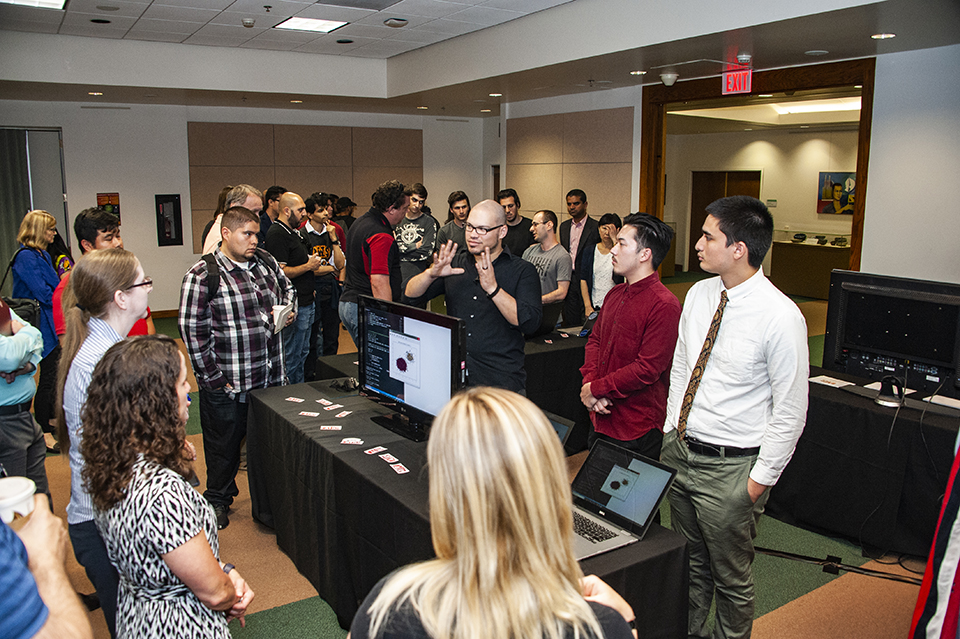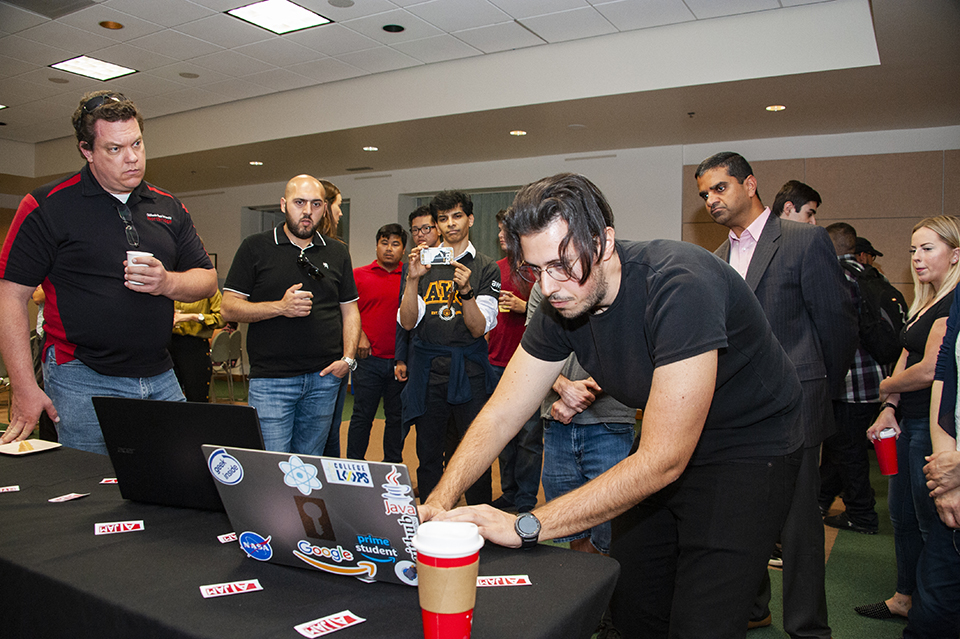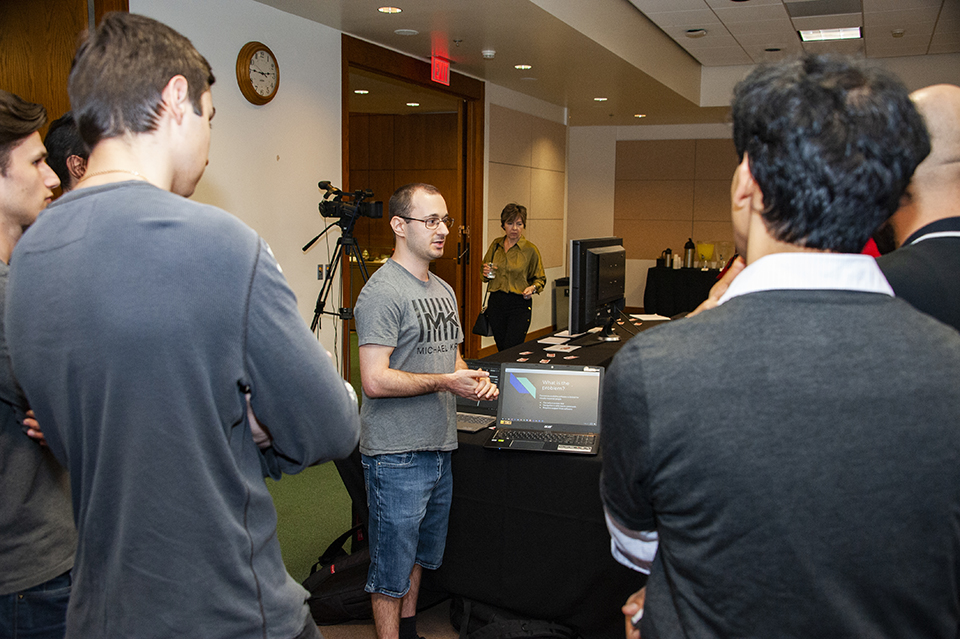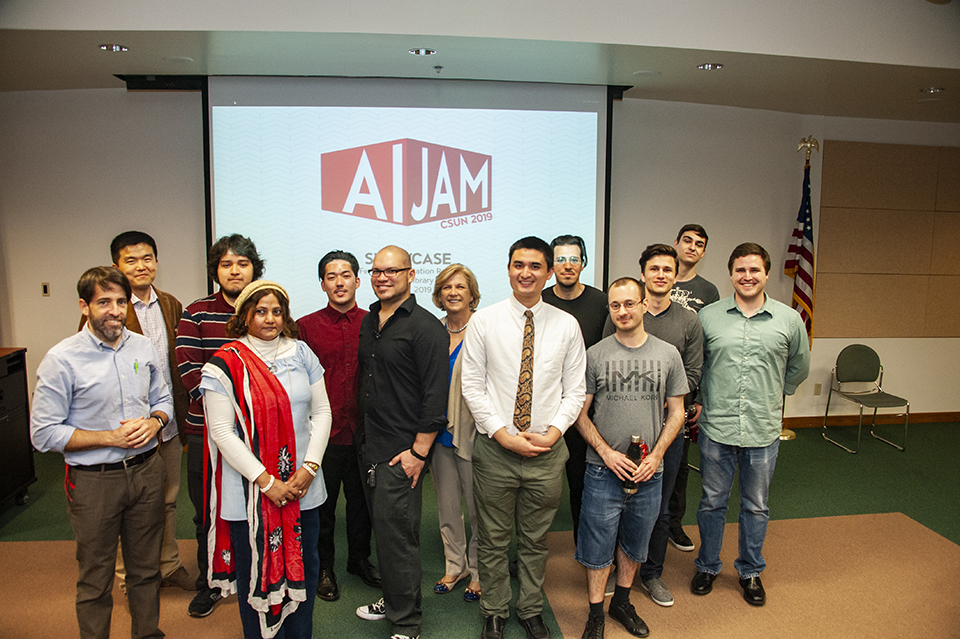Student Teams Harness Artificial Intelligence to Aid Accessibility
What do Amazon Alexa, Netflix streaming and Facebook tagging have in common? Answer: Each uses artificial intelligence (AI) to make our daily lives easier to navigate.
And while the world’s largest tech companies employ AI to examine word accuracy through tone of voice or make movie recommendations based on behavioral data, AI has not been widely used to make the world more inclusive. California State University, Northridge students aim to change that trend. In order to narrow the inclusivity gap, several teams of CSUN students this spring competed in an artificial intelligence competition, dubbed AI-Jam. Using their creativity and skills in innovation, the teams worked to develop a marketable AI product that addressed real-world accessibility needs.
“We took a new approach this year,” said Hilary J. Baker, CSUN’s vice president of Information Technology. “This year we applied artificial intelligence to an assisted technology challenge.”
Competitors had 35 days to come up with their idea and bring it to fruition. The finalist teams, Team ChillN, Eliza and Plug N’ Braille, presented their concepts at the AI-Jam showcase, April 8 in the Jack and Florence Ferman Presentation Room at CSUN’s Delmar T. Oviatt Library. The projects included a biometric app that personalizes panic disorder care; a hand-recognition app that bridges the gap between those who communicate via American Sign Language (ASL) and those who do not, by translating sign language in real-time; and a plug-in image-recognition tablet that can decode graphic images and translate them into Braille for people who are visually impaired.
Of the three finalists, team ChillN swept both judged categories — Best Artificial Intelligence and Best Solution Concept. The winning team included psychology students Patty Orozco and Daniel Saravia, and computer science students Thomas Parashos, Dallin Robbins and David Ward. With their victory, the team punched their ticket to participate in CSUN’s I-Corps Program, where they hope to take their project to the next level: to develop it for market. The program allotted up to $3,000 to support the continuation of their project.
Team ChillN’s app aids people who have a panic or anxiety disorder. The app works by monitoring the user’s body through biometric data, such as heart rate or breathing patterns, via a device such as an Apple Watch or FitBit. The app then takes the data and places it in a cluster that determines whether the data is normal or abnormal. If something is out of the norm, which could indicate an anxiety attack, the app will be able to detect it and alert the user through a notification on the wearable and mobile app.
Depending on the level of distress, Team ChillN’s app would then offer different solutions to help the user return to normal biometric levels. For example, if a user is experiencing a lower level of anxiety, it suggests breathing or grounding exercises. If the person’s anxiety continues to escalate, the app would prompt them to phone a family member or friend. If the panic attack becomes extremely severe, the app will offer the user options to call their doctor or 911.Robbins said he was inspired to develop the app by a family member with a history of mental illness.
“When we kicked off the AI-Jam, I knew I wanted to do something to assist with mental health. The idea to build [Team] ChillN actually started with my mother. When I asked her if she could have a piece of technology that would be helpful to her, she asked for something that could let her know when she was having an attack, to help her calm down. I thought of the technology that would be needed to make it happen, and got started with Thomas [Parashos] on fleshing it out to what we have today.”
The team of two soon blossomed into five, as they brainstormed on how to turn their idea into reality. The team members noted that they bit off a little more than they could chew with their original idea, as they tried to merge the grandeur of their creativity with the limitations of biometrics.
“The original plan was to target suicidal episodes as well as panic attacks, but that presented challenges when it came to finding biometric data that would help us indicate when an episode was occurring,” said teammate Ward, also a computer science major. “We didn’t want to build a model around an intrusive wearable. So, we chose to stick with simple sensors for metrics like heart rate, perspiration and acceleration, which catered well to targeting panic attacks since there are generally noticeable changes in the first two.”
Team ChillN scored the I-Corps funding, but the other two finalists also will be offered assistance and mentorship from faculty and staff in order to further flesh out their projects, Baker said.
“This has been one of the most challenging competitions we have had to date — we knew we would be asking a lot from the students — but the students more than rose to the challenge,” said Kyle Shaver, assistant director, web and emerging technology in the Information Technology department. “These students have found ways to use AI in creative ways that have the potential to really impact someone’s life for the better, which is something we are really proud of.”







 experience
experience